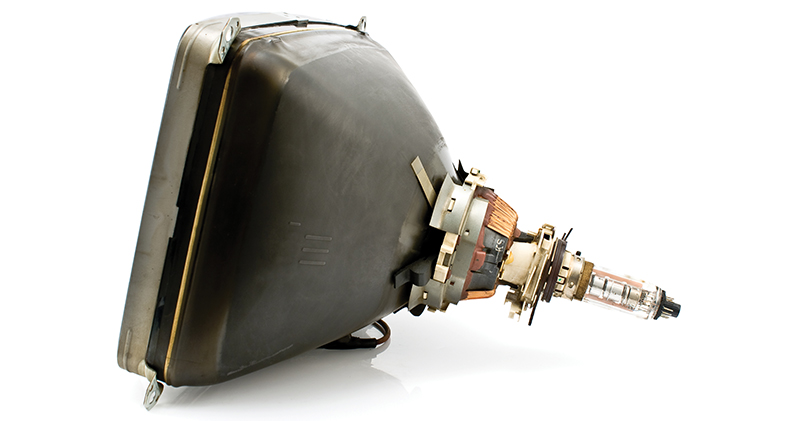That What Brought Us
By the PHANTOM
Hey, you remember something called “video?” It was what brought us to the dance in the first place. For you young-uns who ain’t got a clue, there was once this service that came over our cables that did NOT come through a modem to a computer. There was no computer in any home, at least so far as we know. In fact, there were few computers in the world, and this guy named Watson said that the entire world-wide demand for computers was maybe five units. Heck, my car has way more than that now. Well, maybe not the Model T, but, you know, the newer one. Oh, that guy Watson went on to become rich based on “computers,” with the world needing a bit more than those five.
Anyway, what could we possibly deliver to a home that didn’t use a computer, smart phone, or tablet to show something to the user? Well, it was something called “video,” and it consisted of moving pictures and sound that was actually synchronized to the picture (okay, maybe some things have gone backwards since then). It went to an appliance called a television, or TV for short. At first they were big boxes with little pictures and tiny, tinny sound. Over time the picture and sound got bigger while the box got smaller.
Trivia time: At one time TVs were real heavy, deep boxes that had to sit a ways out from the wall behind them. Then all of a sudden a few years ago, they got much shallower, mere inches thick. And they got lighter. What happened to cause that? Answer, the display used to be what we called a cathode ray tube, CRT, or picture tube. It was a monstrous vacuum tube that worked by boiling electrons off an element called a cathode, located in the back of the CRT, sending the electrons through a grid which varied the number of electrons it let through, depending on the picture content. Then the electron stream, or beam, was insulted by being pulled up or down and left or right, depending on where the beam was supposed to hit the screen at the front of the CRT. The screen had a phosphorescent material that glowed when hit with the electron beam. All this happened three times, one for the red signal, one for the green signal and one for the blue signal. Then almost a thirtieth of a second later, it started all over again. The whole thing happened in a vacuum so that there were no air molecules for the electrons to collide with, since a collision would prevent the electrons from reaching the right place on the screen. The whole CRT contraption was built to let all that abuse be heaped on the electron stream, and since it had to be done in a vacuum it needed big, heavy glass to enclose it.
But then smart people figured out different ways to make the picture. Of the several new and useful ways to make pictures, one stood out as an early leader, and that was a technology called liquid crystal display, or LCD. Liquid crystals are a bit like solid crystals, of which a common but not exclusive example is a “rock” made of quartz, that controls frequency. LCDs have the property that they will conduct light of one polarity while stopping light of the opposite polarity. You can control the polarity of the light that passes with an electric field. So if you start with ordinary light and pass it through a polarizing filter before passing it through an LCD that either passes the light or not, depending on its polarization, then you can control the amount of light that the viewer sees. You have a display that is much thinner and lighter than the CRT — no vacuum required.
Don’t believe me about the polarization thing? Hold a pair of polarized sunglasses backwards over one eye and rotate them 90 degrees while watching an LCD screen. If you are really looking at an LCD then at some rotation the picture will disappear and at a rotation 90 degrees away the picture will appear in all its glory. Now there are some other display technologies in use today, so you may have to look at more than one display to see the effect. Computer monitors, smart phones and pads, digital watches, and some of the displays in your car use the same LCD technology.
Well, shoot, I come up for air after taking you on a nerdy trivia exploration, only to find that I’m out of space. So whatever the point I was going to make, it is gonna have to wait till next time. It must have been something about the state of the video market today and how I long for the simple days when we just had to figure out which of the three programs on now we were going to watch. (Actually we remember when there was only one TV station in our market, and you either watched it or you did something productive, but now I really digress.).
 The Phantom
The Phantom
the.phantom@youwontfindmeanywhere.com
You never know when The Phantom is standing right beside you. Sometimes he is in a meeting with you or walking the floor at your favorite cable show. Sometimes he’s hanging with the suits and other times with the front liners. But be assured, The Phantom sees all, The Phantom knows all and, most importantly, The Phantom tells all.
Shutterstock




